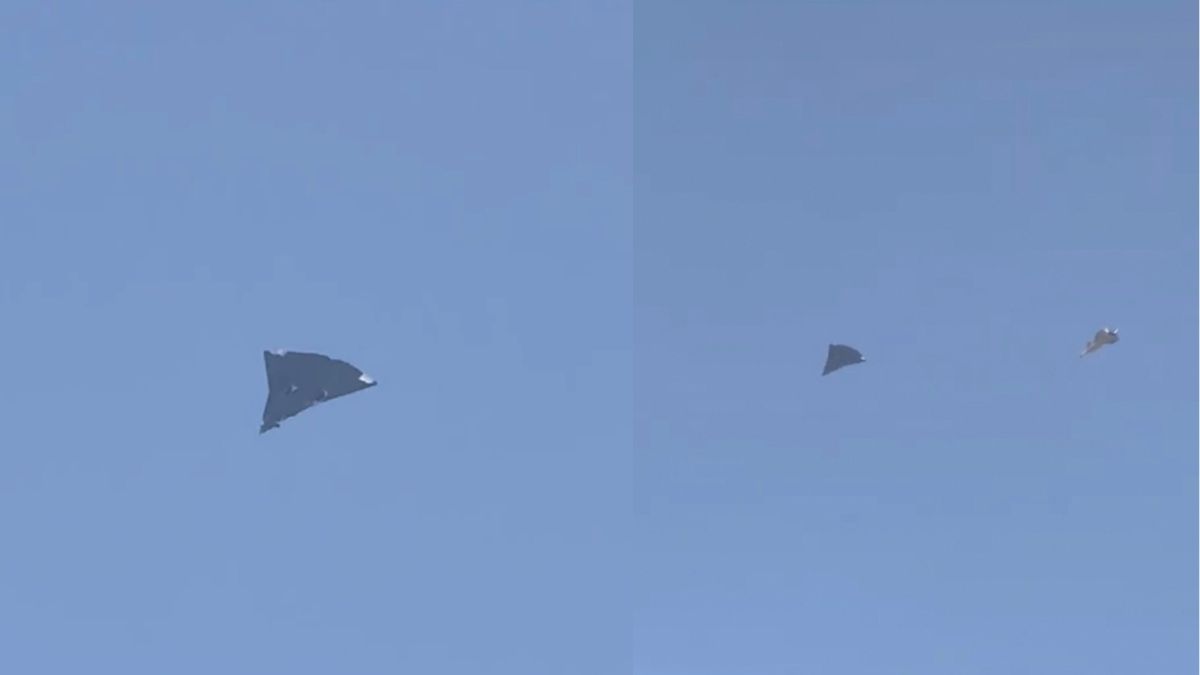China’s latest advancements in military aviation have brought its sixth-generation fighter jet prototypes into the global spotlight.
With new images having surfaced this week on social media, we take a look at Beijing’s intent to redefine air combat in the 21st century.
Footage has emerged showing two distinct aircraft in Chengdu, capital of the China’s Sichuan province.
The first, a diamond-shaped, tailless design, features three air intakes, two positioned laterally and a third on top, suggesting a unique approach to engine integration. The second aircraft, slightly smaller and with a more conventional appearance, lacks vertical stabilisers entirely, a hallmark of next-generation stealth.
According to Reuters, these designs reflect a departure from the established stealth configurations seen in the J-20 or American F-22. By eschewing traditional tails, China aims to achieve superior stealth against modern radar systems. The lack of vertical stabilisers minimises radar cross-section (RCS) signatures while demanding sophisticated flight control algorithms to maintain stability and agility.
The larger aircraft’s dimensions — estimated at approximately 70 feet in length, rivaling the J-20 — imply a focus on long-range operations. Analysts suggest that the aircraft may prioritise endurance, internal weapon storage, and cutting-edge avionics for missions deep into contested airspace.
What we know about the specs
The engines powering these prototypes remain a subject of speculation. Reports indicate the possible use of WS-10C turbofan engines, though their performance metrics compared to their Western counterparts remain uncertain. The top-mounted air intake could enhance airflow and cooling for high-performance operations, critical for sustained stealth and speed.
Advanced propulsion is key to sixth-generation fighters, not only for achieving supersonic speeds but also for enabling “supercruise”—sustained supersonic flight without afterburners. The ability to cruise at high speeds without emitting large thermal signatures aligns with the operational demands of sixth-generation air dominance.
Sixth-generation aircraft are expected to operate as “flying command centers,” leveraging artificial intelligence, data fusion, and advanced sensors. This emphasis is evident in China’s apparent focus on robust avionics capable of processing vast amounts of data in real time.
Enhanced situational awareness and autonomous decision-making could allow these aircraft to coordinate with unmanned aerial vehicles (UAVs) in swarms, providing a decisive advantage in contested environments. If successful, this technology would enable real-time target identification, electronic warfare capabilities, and seamless coordination across the battlefield.
What the aircraft maybe used for: Bomber, Fighter, or both?
While the prototypes remain officially unidentified, speculation about their intended roles continues. Some suggest the larger aircraft may serve as a regional stealth bomber under the JH-XX program, complementing China’s expanding strategic reach.
Others argue that its tailless design and agility point to an air superiority fighter with unmatched stealth and maneuverability.
Rick Joe, a military analyst stated on X that the grapevine leading up to predicting this thing describes it as an A2A [air-to-air] platform first, likely operating with a focus on stealth superiority and networked combat.
Its role could also involve acting as a “force multiplier,” integrating with drones and other manned aircraft to project power across the Indo-Pacific. The capability to seamlessly operate in heavily defended airspace would pose a formidable challenge to adversaries.
Why China has showed this now
The timing of the prototypes’ test flights aligns with Chairman Mao Zedong’s birthday, a significant date in Chinese political symbolism. The flights occurred in broad daylight, accompanied by a J-20S twin-seat fighter, highlighting the importance Beijing places on these developments.
Reuters quoted Kelly Grieco, an expert at the Stimson Center, who noted the strategic implications of such a high-profile test: “As the Pentagon is actively debating the future of NGAD … it is hard not to wonder if this is Beijing’s attempt to influence that debate.”
China’s deliberate unveiling of these aircraft sends a clear signal to global audiences: its defence industry is rapidly closing the technological gap with the West.
What this means for the sixth-generation race
China’s advancements occur in parallel with similar efforts by the United States and its allies. The US Air Force’s NGAD program, slated for operational readiness by the 2030s, represents a multi-billion-dollar initiative to secure air dominance.
The European Global Combat Air Program (GCAP), involving the UK, Japan, and Italy, aims to field a competitive sixth-generation fighter within the same timeframe.
China’s emphasis on long-range capabilities and stealth directly challenges US and allied air superiority in the Indo-Pacific. By deploying advanced aircraft capable of neutralising regional threats, Beijing could tilt the balance of power, complicating defence strategies for countries like Japan, South Korea, and India.
Despite the buzz surrounding the new fighter, Justin Bronk, a defence analyst, cautioned against hastily labelling it as China’s counterpart to the US Air Force’s Next-Generation Air Dominance (NGAD) aircraft.
Artificial intelligence is emerging as a critical component of sixth-generation platforms. By integrating AI with advanced avionics, China seeks to outpace rivals in battlefield automation, further blurring the line between human and machine decision-making. Such capabilities could redefine the tempo of modern warfare.
What next?
China’s aviation industry has undergone a dramatic transformation since the introduction of the J-10 in the 2000s. The J-20, unveiled in 2011, marked its first foray into fifth-generation technology, boasting stealth, supercruise, and advanced avionics.
The new sixth-generation prototypes represent the next evolutionary leap, drawing on lessons from two decades of R&D.
China’s sixth-generation fighter prototypes signify a pivotal moment in military aviation. For Beijing, the successful deployment of these aircraft would solidify its position as a global military innovator, challenging Western dominance and reshaping the strategic calculus in contested regions.
With inputs from agencies
)